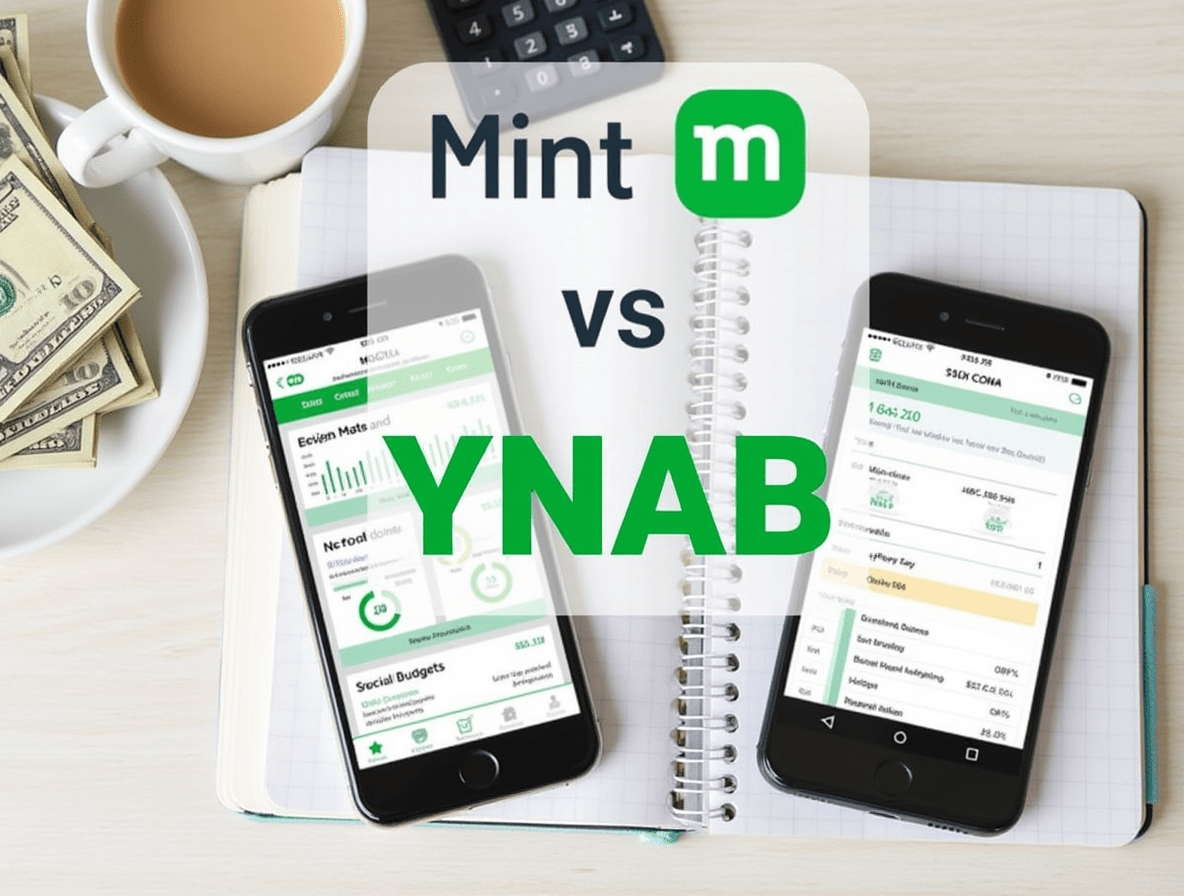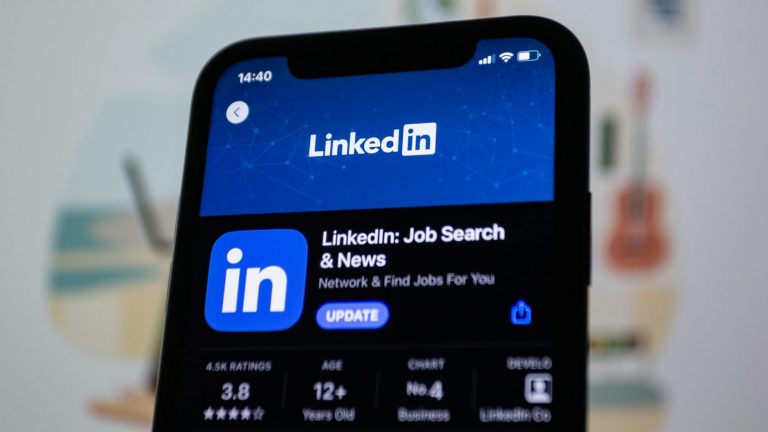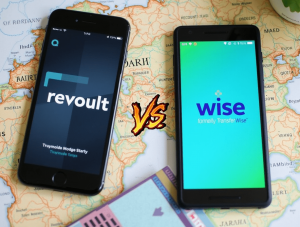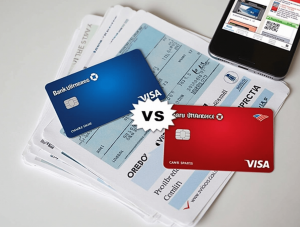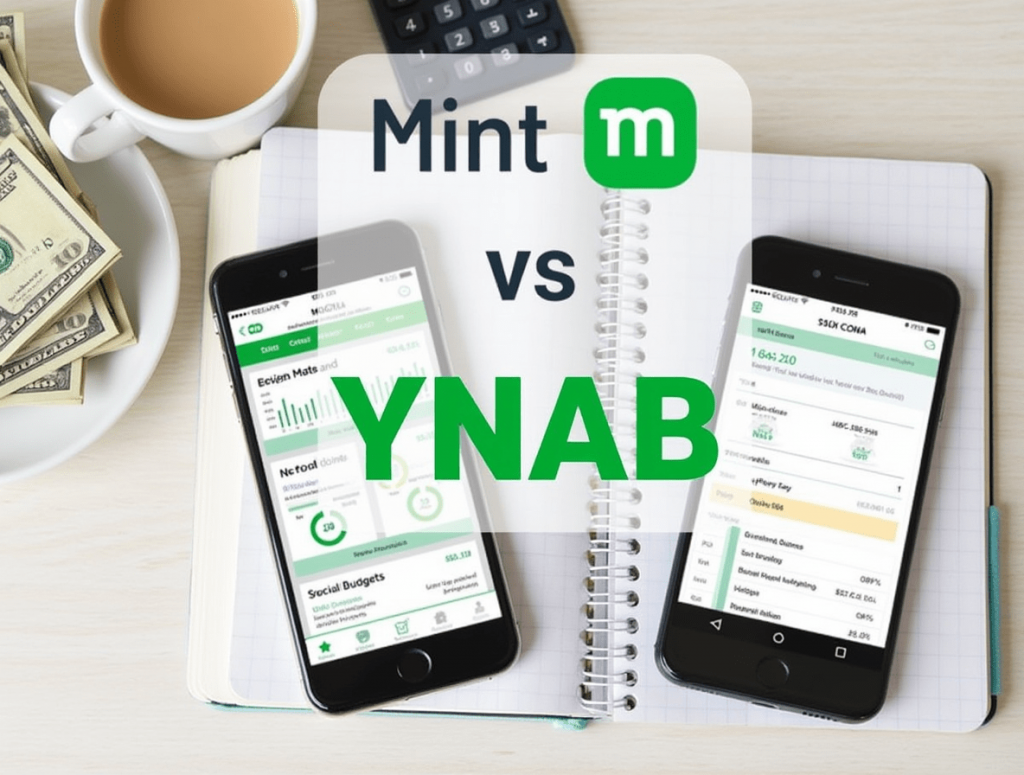
The average American household could save an additional $6,000 annually by tracking expenses and following a consistent budget—yet fewer than one-third of Americans maintain a detailed budget that guides their spending decisions. As financial anxiety continues to rise, more people are turning to digital tools to gain control over their finances.
Mint and YNAB (You Need A Budget) consistently rank as the two most powerful contenders in the personal budgeting app space, but they approach financial management with fundamentally different philosophies. This key difference means that while both can help you save money, one may align significantly better with your financial situation, habits, and goals.
In this comprehensive comparison, we’ll examine how each app approaches budgeting, analyze their key features, evaluate their true costs and savings potential, and provide guidance on which tool might help you save more based on your specific financial situation and mindset.
Understanding the Fundamental Philosophies
Mint: Passive Tracking and Monitoring
Mint, founded in 2006 and later acquired by Intuit (the company behind TurboTax and QuickBooks), operates on a retrospective tracking philosophy. Its core approach focuses on:
- Automatically categorizing past transactions
- Providing visibility into spending patterns
- Setting broad budget categories with monthly limits
- Minimal required user engagement
- Generating insights from historical data
Mint’s underlying philosophy assumes that awareness leads to behavior change. By showing you where your money went, Mint aims to help you make better decisions about future spending.
YNAB: Proactive Planning and Intentionality
YNAB, launched in 2004 as a spreadsheet template before evolving into a full-featured app, embraces a forward-looking, proactive approach built around four fundamental rules:
- Give Every Dollar a Job: Assign all income to specific categories before spending
- Embrace Your True Expenses: Break down large, irregular expenses into monthly allocations
- Roll With the Punches: Adjust your budget as circumstances change
- Age Your Money: Work toward spending money that’s at least 30 days old
YNAB’s philosophy centers on intentionality—deciding what your money will do before you spend it, rather than recording what it did after the fact.
“The difference between Mint and YNAB isn’t just about features—it’s about transforming your relationship with money,” explains financial educator Rebecca Shern. “Mint helps you observe your financial behavior, while YNAB guides you to actively change it through consistent engagement with your money.”
Feature Comparison: Tools for Financial Success
Account Synchronization and Data Management
Mint’s Account Integration:
- Connects with virtually all U.S. and Canadian financial institutions
- Automatic transaction imports and categorization
- Real-time account balance updates
- Investment account tracking
- Credit score monitoring
- Bill detection and payment reminders
- Minimal manual entry required
YNAB’s Account Integration:
- Connects with most major U.S. banks and many international institutions
- Option for automatic or manual transaction entry
- Encourages manual transaction entry to increase awareness
- Scheduled transaction management
- Running balance projections
- Reconciliation tools for accuracy verification
- Works effectively with or without bank synchronization
While Mint offers more comprehensive automatic synchronization, YNAB’s hybrid approach promotes deeper financial awareness through optional manual entry.
Budgeting Methodology and Interface
Mint Budgeting Features:
- Category-based monthly spending limits
- Automatic categorization of transactions
- Visual progress bars for each category
- Customizable categories and subcategories
- Spending trends analysis
- Budget vs. actual comparisons
- Goal tracking for savings targets
YNAB Budgeting Features:
- Zero-based budgeting system where every dollar is assigned
- Category “envelopes” that persist month-to-month
- Age of Money metric to track financial health
- Immediate adjustment of categories when overspending
- Goal types for different saving and debt targets
- Credit card payment handling
- Moving money between categories as priorities change
Mint’s interface emphasizes simplicity with passive monitoring, while YNAB’s interface promotes active decision-making about each dollar.
Financial Education and Guidance
Mint Educational Resources:
- Basic financial literacy articles
- Limited in-app guidance
- Automated insights based on spending patterns
- External financial product recommendations
- Minimal methodology training
- General tips for improving financial health
YNAB Educational Resources:
- Comprehensive methodology training
- Free live workshops on budgeting topics
- Active user community forums
- Detailed help documentation
- Regular educational webinars
- Podcast and YouTube content
- Personalized guidance based on your budget situation
YNAB invests significantly more in teaching users its budgeting methodology, while Mint focuses more on automated insights and recommendations.
Reporting and Analytics
Mint Reporting Features:
- Spending trends over time
- Category comparison charts
- Net worth tracking
- Debt analysis
- Investment performance monitoring
- Bill payment tracking
- Credit score trends
YNAB Reporting Features:
- Income vs. expense reports
- Net worth tracking
- Spending by category/payee
- Income breakdown
- Age of Money trend
- Money available for each category over time
- Custom report creation
- Export capabilities for further analysis
Both apps offer comprehensive reporting, but Mint provides broader financial health metrics, while YNAB focuses more specifically on budgeting effectiveness.
Cost Structure and Business Models
Understanding how each app makes money reveals important differences in their incentives and approach to helping you save.
Mint’s Business Model
Cost to Users:
- Free core budgeting functionality
- Premium features ($4.99/month):
- Enhanced categorization
- Subscription cancellation tools
- Ad-free experience
- Enhanced data export
How Mint Makes Money:
- Advertising financial products within the app
- Referral commissions when users sign up for recommended credit cards, loans, or banking services
- Selling anonymized user financial data for market insights
- Premium subscription revenue
Mint’s business model incentivizes user acquisition and financial product recommendations, which can sometimes conflict with helping users minimize costs.
YNAB’s Business Model
Cost to Users:
- $14.99/month or $99/year ($8.25/month equivalent)
- 34-day free trial (no credit card required)
- Free for students for 12 months
- No advertising within the app
How YNAB Makes Money:
- Subscription revenue from users
- No financial product referrals or data selling
- Direct alignment between company success and user success
YNAB’s business model creates direct accountability to subscribers, aligning its incentives with helping users save money through effective budgeting.
Savings Potential: By the Numbers
Both apps claim to help users save money, but their approaches yield different results for different user types. Let’s examine the data:
Mint Savings Data
According to Mint’s internal data and third-party research:
- Average users report saving $300-600 in the first three months
- Savings primarily come from:
- Identifying and eliminating unnecessary subscriptions
- Recognizing problematic spending categories
- Taking advantage of bill negotiation features
- Finding lower-interest financial products
- Minimal long-term behavior change required to maintain savings
YNAB Savings Data
According to YNAB’s user surveys and published data:
- New users save an average of $600 in their first two months
- Long-term users report saving $6,000 in their first year
- 80% of active users say they feel more in control of their finances
- Users report reduced financial stress and anxiety
- Savings primarily come from systematic behavioral changes in spending habits
The key difference appears to be in sustainability and magnitude of savings over time. Mint may help identify immediate savings opportunities, while YNAB appears to produce larger sustained savings through systematic behavior change.
User Compatibility: Finding Your Financial Match
Different personality types and financial situations align better with different budgeting approaches. Here’s how to determine which might work better for you:
When Mint Shines Brightest
Mint typically works better for:
- Financial observers who want insights without significant time investment
- Those with stable income and expenses who need minimal adjustment
- People seeking broad financial overview beyond just budgeting
- Users comfortable with financial product recommendations
- Those who prefer automatic categorization over manual entry
- Individuals wanting free functionality without subscription costs
- Users seeking integrated investment and credit score tracking
“I tried both apps, but stuck with Mint because I primarily wanted to track spending patterns without changing my entire financial approach,” explains Michael Chen, a software engineer. “It gives me the 30,000-foot view of my finances with minimal effort.”
When YNAB Delivers Greater Value
YNAB typically works better for:
- Those actively working to change spending habits
- People with irregular income or unpredictable expenses
- Individuals recovering from financial difficulties or paying down debt
- Those willing to invest time in learning a systematic approach
- Users uncomfortable with financial product marketing
- People who benefit from community support and education
- Those wanting greater control over financial decisions
“YNAB completely transformed my relationship with money,” shares Alicia Rodriguez, a freelance designer. “Before, I was constantly stressed about cash flow with my irregular income. Now I’m consistently a month ahead on bills and have saved my first emergency fund, despite earning roughly the same amount.”
Long-Term Impact: Beyond Initial Savings
The true test of any financial tool is its ability to create lasting change. Let’s examine how each app affects long-term financial health:
Mint’s Long-Term Impact
Strengths for Long-Term Growth:
- Passive monitoring that continues working with minimal effort
- Comprehensive financial picture including investments and credit
- Automated alerts to prevent common financial mistakes
- Early warning system for budget problems
- Historical data for long-term trend analysis
Potential Long-Term Limitations:
- Limited accountability mechanisms
- Less emphasis on changing fundamental money habits
- May not address root causes of overspending
- Dependence on automation can reduce financial awareness
- May encourage financial product switching rather than behavioral change
YNAB’s Long-Term Impact
Strengths for Long-Term Growth:
- Builds fundamental financial habits and disciplines
- Creates a sustainable budgeting practice
- Enhances financial decision-making abilities
- Reduces money stress through proactive planning
- Develops skills that transfer beyond the app itself
Potential Long-Term Limitations:
- Requires consistent engagement and time investment
- Steeper learning curve may discourage some users
- Subscription cost is a factor in overall savings calculation
- Less comprehensive for investment tracking
- Some users report “YNAB fatigue” from frequent interaction requirements
Integration with the Broader Financial Ecosystem
How well does each app fit into your overall financial technology stack?
Mint’s Financial Ecosystem
Integration Strengths:
- Seamless connection with TurboTax for tax preparation
- Investment tracking across multiple platforms
- Credit score monitoring and analysis
- Bill payment capabilities
- Property value estimations (through Zillow)
- Loan refinancing opportunities
Integration Limitations:
- Limited export capabilities for advanced analysis
- No direct integration with financial advisors
- Fewer connections to non-Intuit financial software
YNAB’s Financial Ecosystem
Integration Strengths:
- Detailed CSV export capabilities
- API access for developers to build extensions
- Direct import into spreadsheet programs
- Strong user community creating unofficial integrations
- Partner network of financial coaches familiar with the system
Integration Limitations:
- More limited integration with investment platforms
- No credit score monitoring
- No tax preparation integration
- No bill payment functionality
Making Your Decision: Personal Factors to Consider
When deciding which app will help you save more, consider these key questions:
- What’s your primary financial goal?
- Debt reduction and emergency fund building favor YNAB
- Investment growth and overall net worth tracking favor Mint
- How much time can you commit to budgeting?
- Minimal time commitment favors Mint
- Willingness to invest 15-30 minutes weekly favors YNAB
- Are you struggling with overspending or living paycheck-to-paycheck?
- Persistent financial struggles typically benefit more from YNAB’s proactive approach
- Already financially stable situations may do fine with Mint’s passive tracking
- Do you have irregular income or large irregular expenses?
- Irregular financial situations benefit significantly from YNAB’s forward-planning approach
- Stable, predictable finances can work well with Mint’s simpler system
- Are you willing to pay for a budgeting tool?
- Free preference points to Mint
- Willingness to invest financially favors YNAB
- What’s your learning style?
- Self-directed learning with minimal guidance favors Mint
- Structured learning with community support favors YNAB
Real User Experiences: Savings Success Stories
Mint Success Profile: The Passive Optimizer
Rachel, a 33-year-old corporate accountant with stable income, used Mint to identify several optimization opportunities:
“Mint helped me discover I was spending $287 monthly on subscriptions I barely used. I also realized my grocery spending was 40% higher than I thought. By setting realistic budget targets and receiving alerts when I approached limits, I was able to save an extra $430 monthly without feeling deprived. The credit card recommendations also helped me switch to a cash-back card that earns me about $340 annually.”
Total annual savings: Approximately $5,500
YNAB Success Profile: The Financial Transformer
Jason, a 29-year-old freelance graphic designer with irregular income, experienced deeper changes with YNAB:
“Before YNAB, I was constantly behind on something. Despite earning good money, I never knew if I could afford things and had $11,000 in credit card debt. YNAB’s ‘give every dollar a job’ philosophy completely changed my approach. Within 10 months, I’d paid off all credit card debt, built a one-month buffer, and started saving for retirement. The ‘true expenses’ approach meant Christmas and car repairs no longer derailed me. I’m saving at least $7,200 annually now, but the real value has been in completely eliminating financial stress.”
Total annual savings: Approximately $7,200 plus debt elimination
Conclusion: Which App Helps You Save More?
Both Mint and YNAB can help users save money, but they do so through fundamentally different mechanisms that appeal to different types of users.
Mint helps you save more if:
- You’re already relatively financially organized
- You benefit most from passive tracking and awareness
- You primarily need help identifying obvious waste and optimization opportunities
- You prefer a broader financial dashboard approach
- You’re unlikely to commit time to active budgeting
YNAB helps you save more if:
- You struggle with consistent overspending or debt
- You deal with irregular income or expenses
- You benefit from structured methodology and community
- You’re willing to actively engage with your budget regularly
- You want to fundamentally change your financial habits
For many users, the higher savings potential comes from YNAB’s behavioral change approach, but this requires more active engagement and learning. Mint offers an easier entry point with more modest but still significant savings potential through awareness and optimization.
The most important factor in maximizing savings isn’t which app you choose, but rather how consistently you use it. The best budgeting app for you is the one you’ll actually use regularly enough to change your financial behavior.
Consider starting with Mint if you’re new to budgeting or uncertain about your commitment level, then potentially graduating to YNAB if you find yourself wanting more structure and are ready to embrace a more proactive approach to financial management.
Frequently Asked Questions
Can I export my data if I want to switch between Mint and YNAB?
Yes, both apps allow data export, though the transition isn’t seamless. Mint allows CSV exports of transactions, while YNAB offers more comprehensive export options. You’ll need to manually set up your budget structure when switching between systems.
How much time does each app require weekly?
Mint can function effectively with as little as 15 minutes weekly to review categorizations and check insights. YNAB works best with about 20-30 minutes weekly plus a few minutes every couple of days to enter or review transactions.
Do both apps work internationally?
Mint is primarily designed for U.S. and Canadian users and has limited functionality elsewhere. YNAB works worldwide, though bank synchronization features may be limited outside North America and parts of Europe.
Which app is better for couples managing money together?
Both apps support multiple users, but YNAB’s methodology tends to work better for couples because it encourages open communication about priorities and financial decisions. Mint works well for couples who prefer more separate financial management with basic oversight.
Can either app help with business finances?
While both are designed for personal finances, YNAB’s flexible category system adapts better to simple business budgeting. For true business financial management, dedicated business accounting software would be more appropriate.
What happens to my budget if I cancel the subscription to YNAB?
If you cancel YNAB, you’ll lose access to your budget data after your subscription period ends, though you can export your data beforehand. Since Mint’s core features are free, canceling premium features doesn’t affect access to your basic budget.





